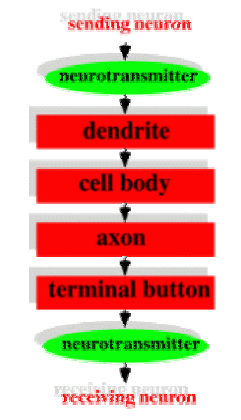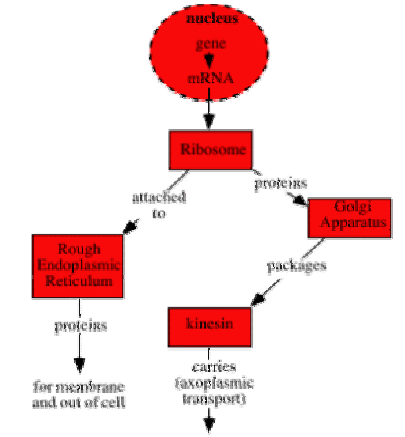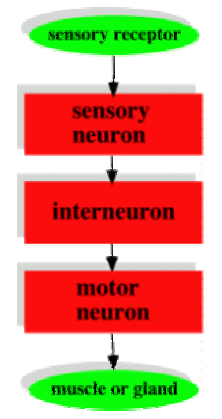The Neuron | Zoology Optional Notes for UPSC PDF Download
| Table of contents |

|
| External Structure of Neurons |

|
| Internal Structure of Neurons |

|
| Types of Neurons |

|
| Relationship Among Different Types of NeuronsSupporting Cells |

|
External Structure of Neurons
A neuron, the fundamental unit of the nervous system, serves as a nerve cell and a crucial building block. Understanding its external structure is essential, as it plays a central role in nerve pathways, neurotransmitter release, and the physiology-behavior relationship.
Dendrites:
- Function: Primarily associated with receiving inputs.
- Description: Branch-like extensions that receive neural signals.
- Specialization: Dendritic spines, specialized areas on dendrites, often receive neural signals.
Cell Body (Soma):
- Function: Mainly associated with processing information.
- Description: Contains the nucleus where cellular activities are initiated.
- Analogy: Comparable to the "brain" of the neuron.
Axon and Terminal Buttons:
- Function: Primarily associated with generating outputs.
- Description: The axon carries signals, and terminal buttons release neurotransmitters.
- Analogy: The neuron as a self-contained information processor.
Nucleus:
- Location: Within the cell body.
- Function: Analogous to the "brain" of the cell, where essential cellular activities are initiated.
Chemical Messengers (Neurotransmitters):
- Location: Contained in terminal buttons.
- Function: Facilitate communication among neurons.
- Importance: Fundamental for understanding neural signaling.
 Neuron Structure and Typical Signal Direction
Neuron Structure and Typical Signal Direction
Additional Neuronal Structures:
Neuronal Membrane:
- Composition: Double layer of lipid with embedded proteins.
- Function: Surrounds the nerve cell, plays roles in substance transportation and blocking.
Synapse:
- Description: Small gap between adjacent neurons.
- Importance: Site for crucial processes in neural communication.
Myelin Sheath:
- Composition: Fatty sheath around axons, interrupted by nodes of Ranvier.
- Function: Speeds up neural signal transmission.
Understanding the external structure of neurons provides a foundation for delving into their internal workings and the intricate processes governing neural communication. Subsequent discussions will explore the internal structure and functions of neurons in more detail.
Internal Structure of Neurons
The internal structure of neurons reveals intricate processes governing cellular activities, particularly within the nucleus, where essential structures contribute to protein synthesis and neural communication.
Nucleus:
- Key Structures: Chromosomes, composed of deoxyribonucleic acid (DNA).
- Function: Houses genetic information, crucial for cellular activities.
- Significance: Genes within chromosomes contain blueprints for protein synthesis.
Genes and Protein Synthesis:
- Process: Genes direct protein synthesis by communicating with messenger ribonucleic acid (mRNA).
- mRNA Role: Carries the genetic message to ribosomes for protein synthesis.
- Ribosomes: Sites where proteins are synthesized; can be free-floating or connected to the endoplasmic reticulum.
Endoplasmic Reticulum (ER):
- Forms: Connected to ribosomes or free-floating.
- Function: Synthesizes proteins; ER connected to ribosomes produces proteins for cell membrane or external use.
Golgi Apparatus:
- Role: Functions as a cellular packaging plant.
- Process: Packages synthesized proteins and prepares them for transport.
- Outcome: Products are transported to the cell membrane for release through exocytosis.
Exocytosis:
- Description: Process where cellular products are released outside the cell.
- In Neural Communication: Vital for terminal buttons releasing neurotransmitters.
- Golgi Apparatus Connection: Products packaged by Golgi are released through exocytosis.
Axoplasmic Transport:
- Description: Movement of cellular materials along the axon.
- Microtubules Role: Structures along which materials, including neurotransmitter packages, are transported.
- Kinesin Molecules: Protein molecules that facilitate axoplasmic transport.
 Neuronal Internal Structures
Neuronal Internal Structures
Understanding the internal structure of neurons unveils the intricate processes involved in genetic information transfer, protein synthesis, and the release of crucial cellular products. The subsequent exploration of these internal mechanisms will provide deeper insights into the functioning of neurons in the nervous system.
Types of Neurons
Neurons play diverse roles in transmitting messages within the nervous system, and their classification is based on their functions. Additionally, supporting cells, crucial for the well-being and functioning of neurons, play a vital role in maintaining the structure and facilitating communication.
Neuronal Classification:
- Sensory Neurons:
- Function: Transmit messages from sensory receptors to the spinal cord and brain.
- Motor Neurons:
- Function: Convey messages from the spinal cord and brain to muscles and glands.
- Interneurons:
- Function: Form connections with other neurons, not sensory receptors or muscles.
Neuronal Shapes:
- Multipolar Neurons:
- Structure: Multiple dendritic projections and one axon from the soma.
- Typical Role: Motor or interneurons.
- Bipolar Neurons:
- Structure: One dendritic projection.
- Typical Role: Sensory neurons.
- Unipolar Neurons:
- Structure: One projection combining dendrite and axon.
- Typical Role: Sensory neurons.
 Relationship Among Different Types of NeuronsSupporting Cells
Relationship Among Different Types of NeuronsSupporting Cells
- Definition: Cells that provide support and ensure proper neuronal function.
- Importance: Essential for nutrient transfer, guiding neural signals, and maintaining neural structure.
- Major Types: Vary between the central nervous system (CNS) and peripheral nervous system (PNS).
- Nutrient Transfer: Facilitate the transfer of nutrients from blood capillaries to nerve cells.
- Phagocytosis: Engage in cleaning damaged tissue and maintaining the system's structure.
- Myelin Sheaths: Provide the fatty sheaths (myelin sheaths) for nerve cells.
- Regrowth Support: Aid in regrowth by secreting nerve growth factor and providing structural guidance.
CNS vs. PNS Supporting Cells:
- Peripheral Nervous System (PNS):
- Feature: Supporting cells provide structural guides for regrowth.
- Outcome: Greater likelihood of regrowth after damage.
- Central Nervous System (CNS):
- Feature: Lack supporting cell-provided structural guides.
- Outcome: Lower regrowth potential after damage.
Understanding the diverse types of neurons and the vital role of supporting cells sheds light on the intricacies of neural communication and the significance of structural support in maintaining the functionality of the nervous system.
|
181 videos|351 docs
|



















